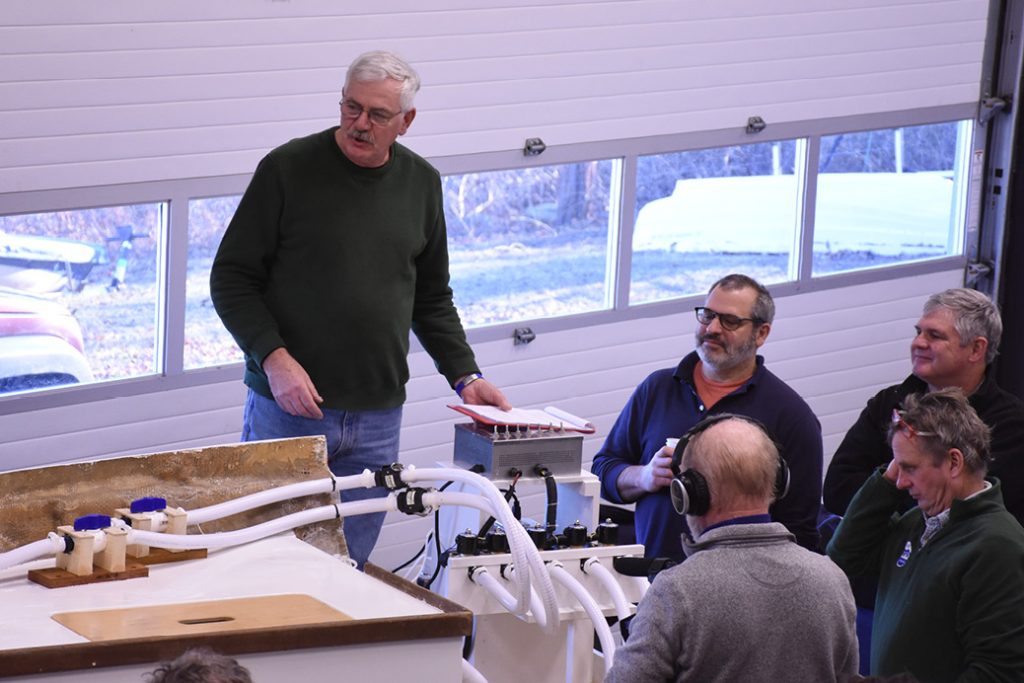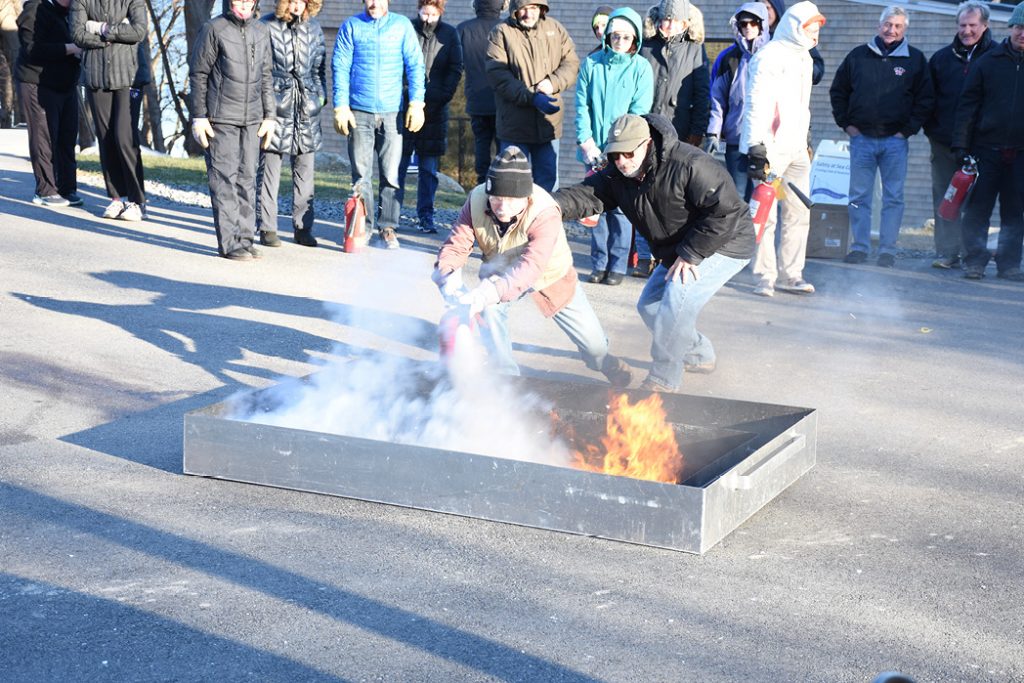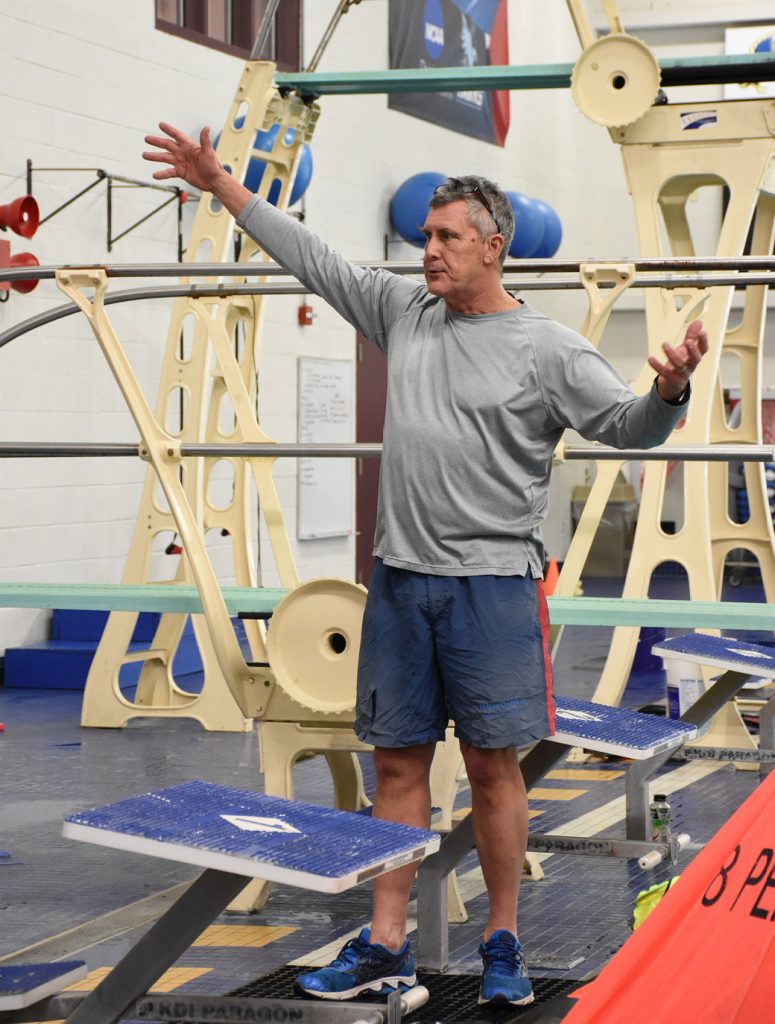Editor’s note: As we reported in our January/February 2020 edition, our friends at the New York Yacht Club (NYYC) and the Cruising Club of America (CCA) have joined forces to co-sponsor International Offshore Safety at Sea seminars. These US Sailing Sanctioned seminars provide hands-on training for full certification in offshore ocean races, but are equally valuable for cruising and deliveries, power or sail.
The CCA’s Safety & Seamanship Committee has also published a list of recommendations entitled “Creating a Culture of Safety: The Skipper’s Responsibility,” based on the principle that “good seamanship demands a culture of safety to prevent serious injury (or loss of life) to all those on board at all times.” To learn more, we spoke with David Tunick, Chair of the NYYC Seamanship Committee and a resident of New York City and Stamford, CT.
WindCheck: What is the role of the NYYC Seamanship Committee, and what are your responsibilities as Chair?
David Tunick: The NYYC Seamanship Committee is responsible for setting, promoting, and teaching best practices in safety standards for the club. It’s my responsibility as Chair to gather the best qualified men and women of the club to lead in matters of safety and good seamanship. As Chair I am essentially an administrator. Every member of the Seamanship Committee has far greater expertise in certain areas than I do – people like Stan Honey, Bill Tripp, Rich du Moulin, Dick York, Peter Becker, Rich Wilson – and it’s my job to harness that expertise and present it via seminars, clinics, and presentations to the club membership in ways that further our goals as a committee within the mission of the club.

This leak trainer simulates the causes of water ingress into vessels, from failed through-hull fittings to collision damage. © Mark Lenci
WC: How did the partnership between the NYYC and CCA come about?
DT: There’s a lot of crossover membership between the CCA and the NYYC in general and significant crossover in members on the NYYC Seamanship Committee and the Safety & Seamanship Committee of the CCA. The NYYC has global recognition and has had a leadership role in the sport since its founding in 1844. What it didn’t have was a proper hands-on safety seminar program. The CCA did in spades, especially in the last few years under Mark Lenci, a former nuclear attack sub commander and avid amateur ocean sailor and racer, who had further developed the CCA seminar program to a point where it was educating a full one-third of those who wanted US Sailing offshore certification. Mark is also a member of both clubs and on our NYYC Seamanship Committee, and he and I thought it made all the sense in the world for the two clubs to partner.
The CCA had the program; the NYYC had the visibility and a clubhouse in Newport, RI, and the CCA was holding seminars in nearby Bristol, RI, several times a year. Both clubs were already of the same mindset in having contributed financially to US Sailing’s online video course that has been a kind of game changer for students on the way to certification. We next had to
convince the flag officers of both clubs, which rightly are proud of their respective histories and their own extraordinary brands. Our argument was that it was a win-win situation: both clubs would benefit from a seminar partnership. Happily, in a discussion that went on for two years, the flag officers of both clubs agreed, and the partnership became official.

Participants in the hands-on safety-at sea seminars presented by the New York Yacht Club and the Cruising Club of America learn a variety of lifesaving skills including firefighting. © Mark Lenci
WC: Please recount a recent incident or two in which loss of life might have been prevented through proper preparation, improved training, and better decision-making.
DT: There was a tragedy in a recent major race that might have been avoided, according to official and unofficial accounts. (For a published report, go to https://content.sailinganarchy.com/uploads/2019/02/25Feb19_Imedi_Incident_Report.pdf). A crewman of some experience went overboard. He wasn’t tethered; his PFD did not inflate; he did not manually inflate; and the boat failed to pick him up in three passes. These things happen in a flash, and none of us was there, but from what we know, better training and practices very possibly could have led to a happy outcome.
Just a few weeks ago in my local waters (Stamford, CT), a 22-year-old man was lost in a sudden squall when his kayak overturned. He was not wearing a PFD.
I was a competitive swimmer in my youth and am still a strong swimmer, but on my own boat, it is a rule for everyone on deck to wear a PFD whenever we are underway, no matter the conditions. Last summer in the Stockholm Archipelago we had a highly experienced man go over while we were at anchor as he was stepping from my boat onto another vessel (a huge, high-powered inflatable to go to the rescue of another boat that was on the rocks). The wind was blowing hard, it was heavily overcast, and the water was dark and cold. My guy went down, immediately out of sight, and time seemed interminable until he popped to the surface; one of the best sights I’ve ever seen. He was in shock, but he lived to tell about it. It was definitely the hydrostatic PFD that inflated and averted what otherwise easily could have been a loss of life.
WC: What is the Culture of Safety?
DT: The Culture of Safety is about approach, attitude, training, practice, leadership, and situational awareness. It pertains to the vessel, the captain, the watch captains, and the entire crew. It pertains whether you’re out for a day cruise or an around-the-world race. It pertains whether the weather is calm or stormy. It is critical not only to saving lives, but also to a more relaxed and fulfilling experience whenever you’re on the water. Credit is due to our partner, the CCA and its chair of their Safety Committee, John Robinson, for originating the term, Culture of Safety, and giving it definition.

Seminar instructor (and WindCheck Contributing Editor) Joe Cooper conducts a liferaft session at Roger Williams University. © Mark Lenci
WC: Please describe the importance of safety leadership and a skipper’s ability to take charge in an emergency.
DT: The buck stops and starts with the skipper. It’s the skipper who instills the Culture of Safety in his or her crew. It’s the skipper who commands, leads, and teaches safe practices through practice – MOB drills; drills for who does what as the weather builds; for who does what in the event of a leak; for who does what in a medical emergency; and for who does what if there’s a fire. It’s the skipper who is responsible for maintaining and equipping his or her vessel, and who mandates what and how each and every crew must be equipped. It’s the skipper who leads by example and who instills confidence by virtue of skill and experience and a projected, confident mien.
WC: How is the NYYC/CCA safety program expanding?
DT: The program has grown exponentially, especially in the last few years. The hands-on Safety-at-Sea seminar, as I mentioned, now produces one-third of all people in America who get certified by US Sailing. It has grown from one seminar a year to one seminar every couple of months. The demand is enormous, and it’s telling in a positive sense that we get as many cruisers who come to us for instruction and certification as racers.
We also have a plan, once the pandemic passes, to add the beautiful NYYC facility in Newport, Harbour Court, as our venue for the upcoming Level 200, the advanced add-on to the course we give at Roger Williams University in Bristol.
At the NYYC via clinics and seminars, both online and live, we also teach things that every captain and crew should master like celestial navigation, weather forecasting, diesel repair, and damage control. With the recent interest in reduced crew size due to the coronavirus, we will also be offering instruction in shorthanded sailing taught by those who have years of offshore experience, racing and cruising shorthanded in conditions as extreme as they come.
WC: What specialized skills will sailors learn at your advanced Level 200 seminars?
DT: Students will be on boats ranging from about 38 to 60 feet that will take them out in Narragansett Bay for actual on-the-water instruction including saving a man overboard, deploying storm sails, and heaving-to. It’s one thing to see these essential measures on paper or in a YouTube video, but it’s entirely different in real life, especially in inclement weather, not to mention at night. At the Level 200 seminars we won’t teach at night, but we will not duck rough weather. Let me also add that we all owe a debt to the Storm Trysail Club for its exemplary role over the years in pioneering their hands-on offshore seminars, not least in serving as a model for our Level 200 initiative. Our shared member, Rich du Moulin, has led that effort.
WC: How can sailors sign up for the CCA/NYYC Safety-at-Sea seminars and learn more about the Culture of Safety?
DT: To sign up for a seminar, go to cruisingclub.org/courses. Please note, however, that the courses are canceled until further notice due to the coronavirus pandemic. You’ll find the Culture of Safety recommendations at cruisingclub.org/article/safety-culture.
WC: Please tell us about the sailing you enjoy.
DT: I like all kinds of sailing, especially cruising; there’s no place I’d rather be than on my boat. She is a 55-foot custom aluminum yawl designed by Sparkman & Stephens and built by Abeking & Rasmussen in 1967. I’ve owned her 36 years. I do some racing every year, either on my boat or on friends’ boats who are more involved in racing than I am.
My attitude used to be that I race around in my day job in New York; the last thing I wanted to do on weekends was race around buoys, especially when there’s little or no wind, but in the last few years I find I like the competition on the water because it reaches for excellence via teamwork and finely tuned and maintained equipment. Nonetheless, my heart is mostly in cruising. I enjoy it all, from the preparation to gunkholing to long passage-making, from being alone in a beautiful anchorage to joining (and organizing) club cruises with lots of boats and lots of people, whether in the U.S. or abroad.
I suppose my most notable passage was sailing singlehanded in 2001 from Connecticut to England, where we raced (with a crew of 18) out of Cowes in the America’s Cup Jubilee. I intend to return from Europe, again singlehanded, next year or the year after, depending on state of the world in terms of who’s allowed where during this pandemic.
WC: Thank you very much David. ■
Special thanks to John Burnham (johnsburnham.com), a former editor at Sailing World and Cruising World and a Professional Certified Coach, for facilitating this interview.
